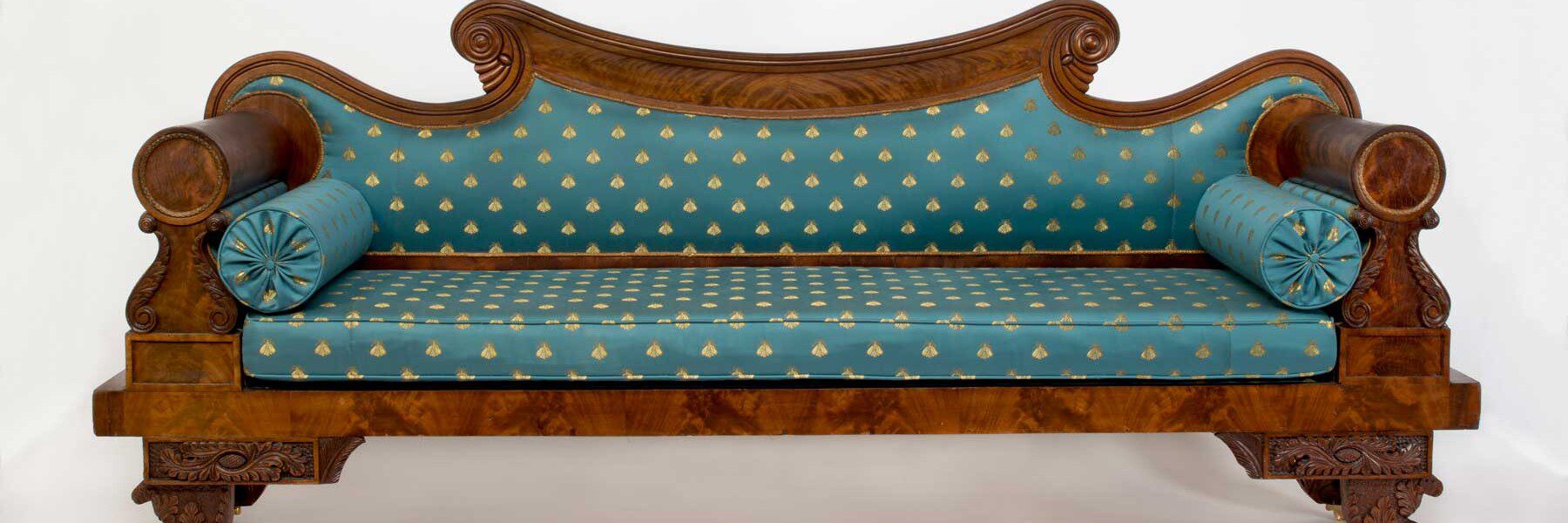Much of the high-style furniture produced in Vermont during the 19th century took cues from pattern books and European precedents. Talented cabinetmakers, many trained in the Connecticut River Valley, settled in northern New England. They created objects that showcase costly imported materials as well as advanced carpentry skills. Specialized forms like tambour desks, card tables, and upholstered sofas were sought after by consumers who wanted to demonstrate both their affluence and their stylish sophistication.
The objects in this exhibition display Vermont consumers’ appetites for fancy, decorative furnishings. These remarkable desks, tables, and seating forms would have been on par with the finest domestic goods from urban centers like Boston, Baltimore, and Philadelphia. They feature imaginatively painted surfaces, deftly carved curves, technically precise geometric inlays, and creative uses of materials meant to surprise and delight users.
Vermont cabinetmakers took advantage of the beauty of native woods when creating furnishings for interior settings. Highly figured cuts—sometimes referred to as ”flame birch,” “birds’-eye maple,” or “tiger maple”—were employed alongside other native and imported hardwoods like cherry, walnut, and mahogany for maximum visual impact. Often these decorative, costly raw materials were cut into thin veneers and used to disguise less desirable softwoods like pine and ash.
Vermont House

